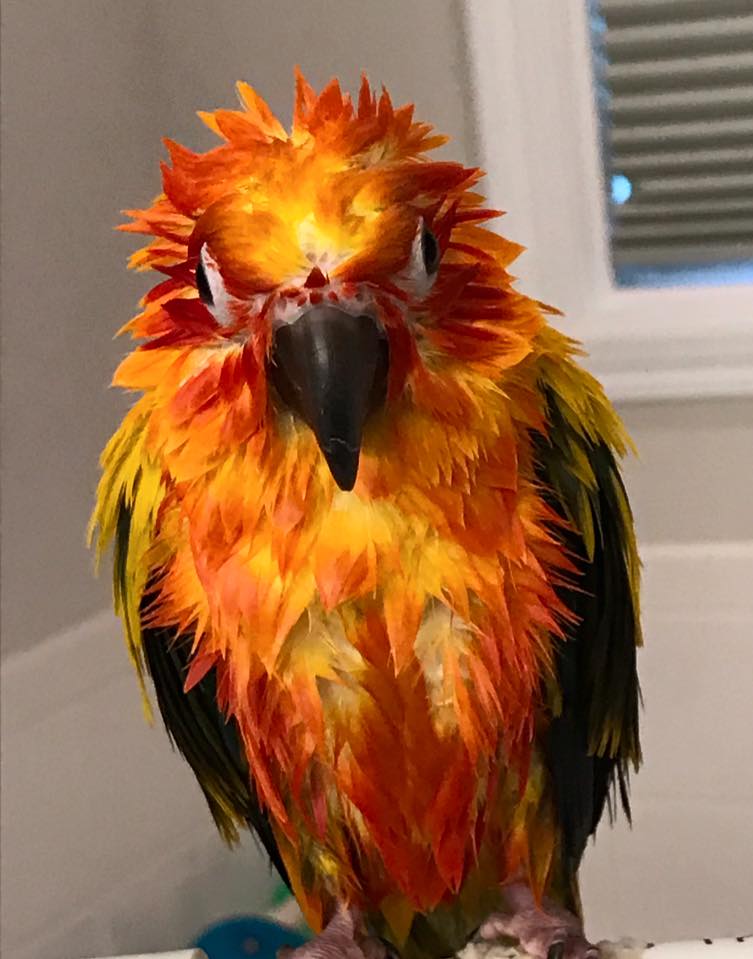Mom, I want a parrot!
With the popularity of the movie Rio and Rio 2 many children have been begging their parents for a pet parrot like the characters in the movie. While dogs and cats are still the most popular pets, companion birds are a rapidly growing third place. A 2010 survey by the American Pet Products Association found 16.2 million birds in 5.7 million U.S. homes. The survey did not count parrots in sanctuaries, shelters, breeding facilities, and zoos, likely numbering millions more. Sadly, many of the people who purchase a parrot on impulse will end up relinquishing it within the first two years. How can you be sure a parrot is the right pet for you, especially if it’s one intended as a child’s pet?
Potential owners should at the minimum consider the following:
Why are parrots so difficult? Unlike dogs and cats, parrots are wild animals. Even those that have been domestically raised are only 1-2 generations out of the rainforest or savannah. It’s a lot of work to keep a wild animal tame! They must be out of their cages and handled on a daily basis. For some of the larger, or needier, birds that means several hours a day. As children get older and involved in more activities will they still want to spend that much time with their pet? Another issue with parrots is their long life spans. Cockatoos and macaws can live up to 80 years! Cockatiels can live over 20 years. Who will care for your bird when your child goes to college? When you retire? You will need to plan for your bird’s future.

Why do you (or your child) want a parrot? There is no doubt that parrots are beautiful, intelligent and playful animals – who wouldn’t want one? Parrot owners will tell you the bond they have with their birds is much stronger than with dogs or cats. In short, properly trained parrots can be delightful companions. They just don’t get that way without investing a good deal of time and work. A poorly trained parrot can be a disaster, especially for a child who won’t understand why their “pet” has bitten them. Some parrots just don’t tolerate younger children. Forget the idea of a talking, trick performing parrot unless you plan to spend hours training. Although all parrot species are capable of learning to talk, the vast majority of parrots (9/10) will never learn more than a few words.
Does a parrot fit your lifestyle?Parrots need a lot of space, secure cages, and safe stands or play-gyms for out of cage time. All parrots can be LOUD. How tolerant of noise are you? How about your neighbors? Parrots are also messy; can you deal with the constant need to clean up feathers, dander, food, toy pieces, and of course, droppings? Do you have time to fix fresh food in addition to pellets (not seed) for your birds? Cost can be a consideration too. Parrots need a lot of mental stimulation when you are not around, which means toys are essential. The cage, stands, toys, food all add up. Then there is veterinary care, which must be provided by an avian experienced vet. A child, even an older teenager, can’t be relied on to provide all the care a parrot needs. As the adult in the home you are legally, as well as morally, responsible for all of the animals in your home.

Beware of babies, both human and parrot. Do your future plans include another baby? Parents should think long and hard about getting a parrot if they do. A new baby is the number one reason parrots are surrendered to rescue groups or shelters. The demands of a newborn and parrot can be too much for many families to handle. Parrots have complex emotions and may become quite jealous of the newborn. Baby parrots, such as those often found in pet stores, are a delight. Like little puppies they are playful and friendly to everyone, but they won’t be babies forever. Because baby parrots are the same size as mature birds it isn’t obvious that they are growing up. Depending on the species, parrots mature around the age of 2-5 years; this is a very common time for them to be relinquished to rescue groups as their owners fail to understand the natural changes in personality that come with maturity.
So you still want a parrot? Good for you!
What type of parrot do you want? Take some time to research the different parrot species before choosing a bird. Consider the amount of space you have available, your level of noise tolerance, and what characteristics are the most important to you in a companion bird. While all birds are individual, some species are more likely to appreciate petting and others are more hands off. They vary in their talking abilities and playfulness too. Consider safety: large birds can cause serious injuries when they bite and young children can easily injure small birds. Once you’ve narrowed your choices, attend a bird club meeting and try to talk to bird owners to get the inside scoop on the species you’re interested in. You can also locate an avian experienced veterinarian and get his or her opinion (you’ll need a vet anyway). Consider adoption too. Rescues are full of healthy, well behaved birds whose owners grew up or grew older and could no longer care for them. You may just find the perfect companion and have the satisfaction of knowing you rescued your new friend.